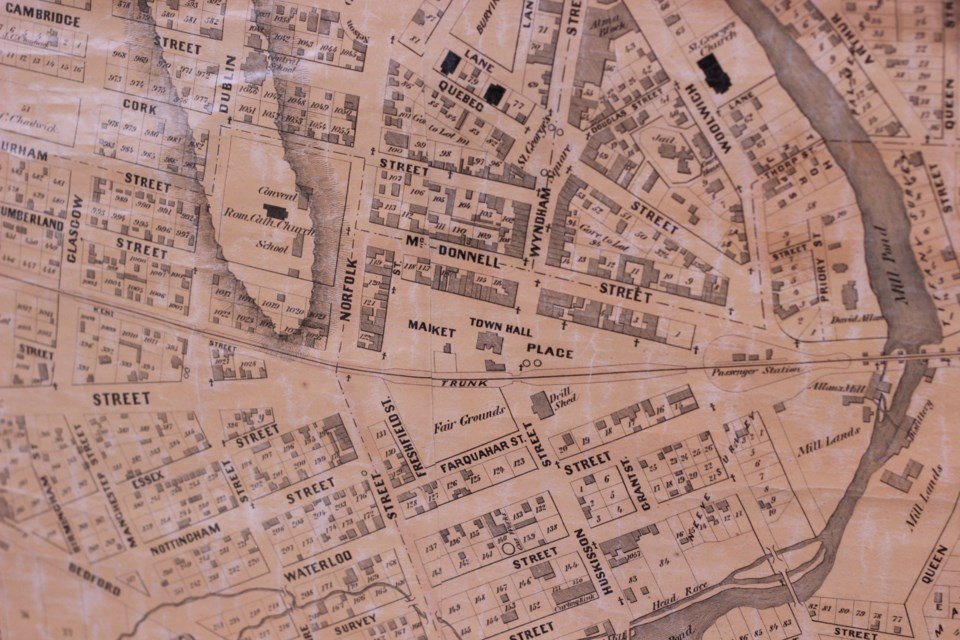The City of Guelph is celebrating Heritage Week by displaying its old maps at City Hall.
“As a way to recognize some of Guelph’s past, I've always wanted to start displaying some of our great old maps,” said senior heritage planner Stephen Robinson.
Cultural program and event coordinator Jen Rafter says the big blank wall of space was crying out for something.
“So with our artists in residence this year, they created six large scale mix media paintings of all of Guelph’s wards. That was the first trial experiment in this space,” says Rafter.
The gallery showcases the six maps that puzzle together to make the 1862 map alongside Thomas W. Cooper’s 1877 map which is a revision of the previous 1862 map.
The framed Cooper’s 1877 map was borrowed from the chair of the heritage advisory committee, P. Brian Skerrett, and is drastically different than the previous versions.
“He did the original map and then by 1877 he was making changes to reflect what had changed in the town by 1877,” said Robinson.
“1867 was Confederation and Canada became a country, so these two maps are on both sides of that date.”
The map details landmarks, roads, landowners and has topographic information such as creeks and highpoints of the hills.
“We're always so used to having google street but when you look at this and look at the birds-eye view images as well, it's kind of basically the same thing, just it can’t sort of zoom around,” says Robinson.
The location of the urban myth which tells the story of Guelph’s founder John Galt chopping the first tree and putting his hand down on the stump to radiate the angle of the streets can visually be seen on the map.
Robinson says the characteristic he appreciates about the map the most its age and originality.
“This is the real thing,” he says.
Robinson revealed that the City is working on the Culture Heritage Action Plan, a project that aims to scope for areas across the city that could be identified as cultural landscapes.
He says these maps are still used for research for heritage conservation of areas.
“People have been using this and we're still using this as a reference,” said Robinson.
The Heritage Trust of Ontario encourages cities across Ontario to recognize and celebrate their heritage. While Heritage week will be celebrated in Ontario from Feb. 18. to Feb. 24., the maps in the galleria will be on display until early May.
